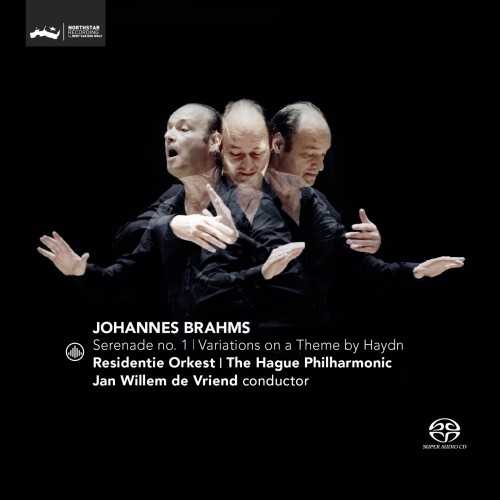
Composer: Johannes Brahms
Orchestra: Hague Philharmonic
Conductor: Jan Willem de Vriend
Audio CD
Number of Discs: 1
Format: DXD FLAC (tracks)
Label: Challenge
Size: 3.16 GB
Recovery: +3%
Scan: yes
Serenade no. 1 in D major op. 11
01. Allegro molto
02. Scherzo: Allegro non troppo – Trio: Poco più moto
03. Adagio non troppo
04. Menuetto I – Menuetto II
05. Scherzo: Allegro – Trio
06. Rondo: Allegro
Variations on a Theme by J. Haydn op. 56a
07. Theme: St Anthony Chorale. Andante 2
08. Variation 1: Poco più animato (Andante con moto)
09. Variation 2: Più vivace (Vivace)
10. Variation 3: Con moto
11. Variation 4: Andante con moto (Andante)
12. Variation 5: Vivace (Poco presto)
13. Variation 6: Vivace
14. Variation 7: Gracioso
15. Variation 8: Presto non troppo (Poco presto)
16. Finale. Andante
In the nineteenth century, the old principality of Lippe-Detmold lay hidden away on the edge of the Teutoburg Forest. Johannes Brahms was offered a post at the court in 1857. It was an attractive offer – he would be paid a good salary simply for being present during the last three months of the year. In the beautiful natural surroundings of the castle at Detmold, Brahms’ adult life actually commenced. Of central importance to his music was the rational order of the eighteenth century and the music of Haydn and Mozart in particular. He would often hear their serenades and divertimenti on court concerts, for which Brahms himself composed a serenade for nine instruments in the ‘relaxed’ atmosphere of the court. Encouraged by friends and colleagues, he then arranged the piece first for small, and later for full, orchestra, calling it his Serenade no. 1.
In today’s world, one often perceives a division between art and academia, and composers and musicologists generally don’t have much to say to one another. But that division has not always existed. Brahms himself was surrounded by a circle of academics who for him were also a source of animated comradeship. With some of them, Brahms would go on long walks outside Vienna and even on summer holidays. The men enjoyed long, and sometimes loud, discussions about their shared obsessions, discoveries and findings. Brahms had these very discussions to thank for his lifelong interest in ‘early music’. He even collaborated intensively on the critical editions of Couperin, Handel and Bach’s sons, and received interesting and useful advice from his friends. One such tip came from the Haydn’s biographer Pohl, who recommended the very theme Brahms would later use in his Variations on a Theme by J. Haydn. The piece is a testament to Brahms’s masterly counterpoint, the technique he and the Bach scholar Philipp Spitta had exchanged views on during their walks together, and on which the two had later corresponded.